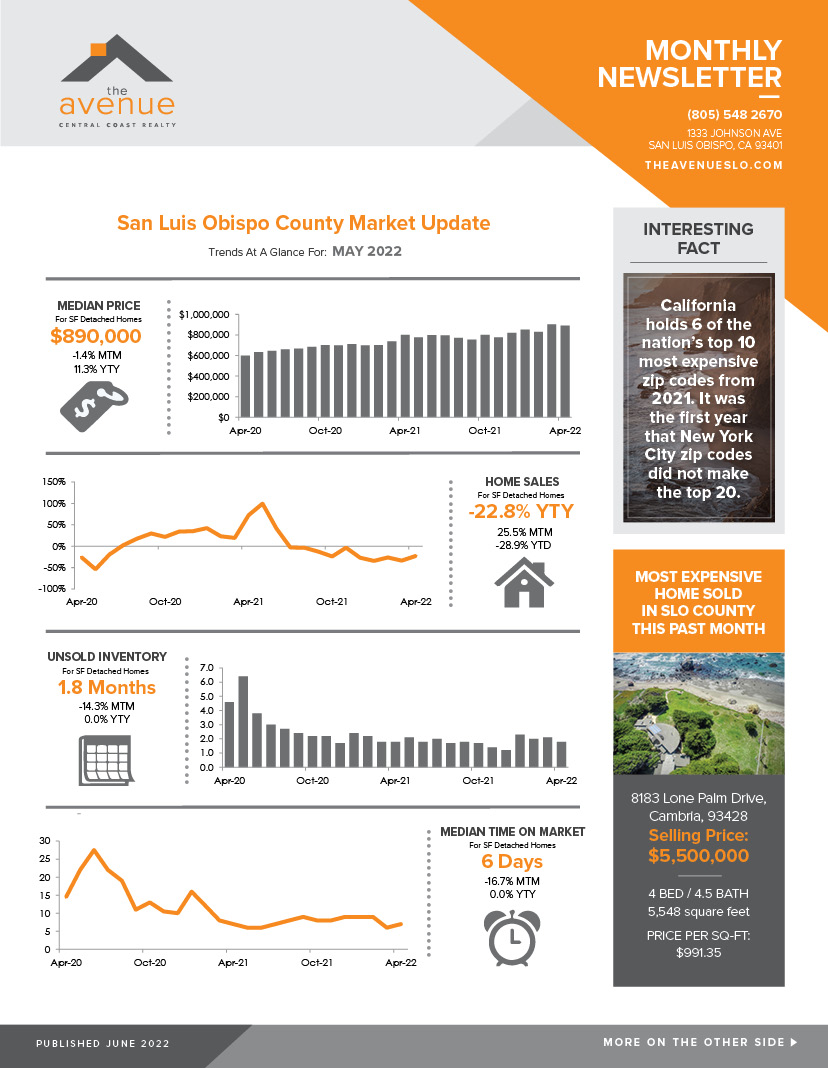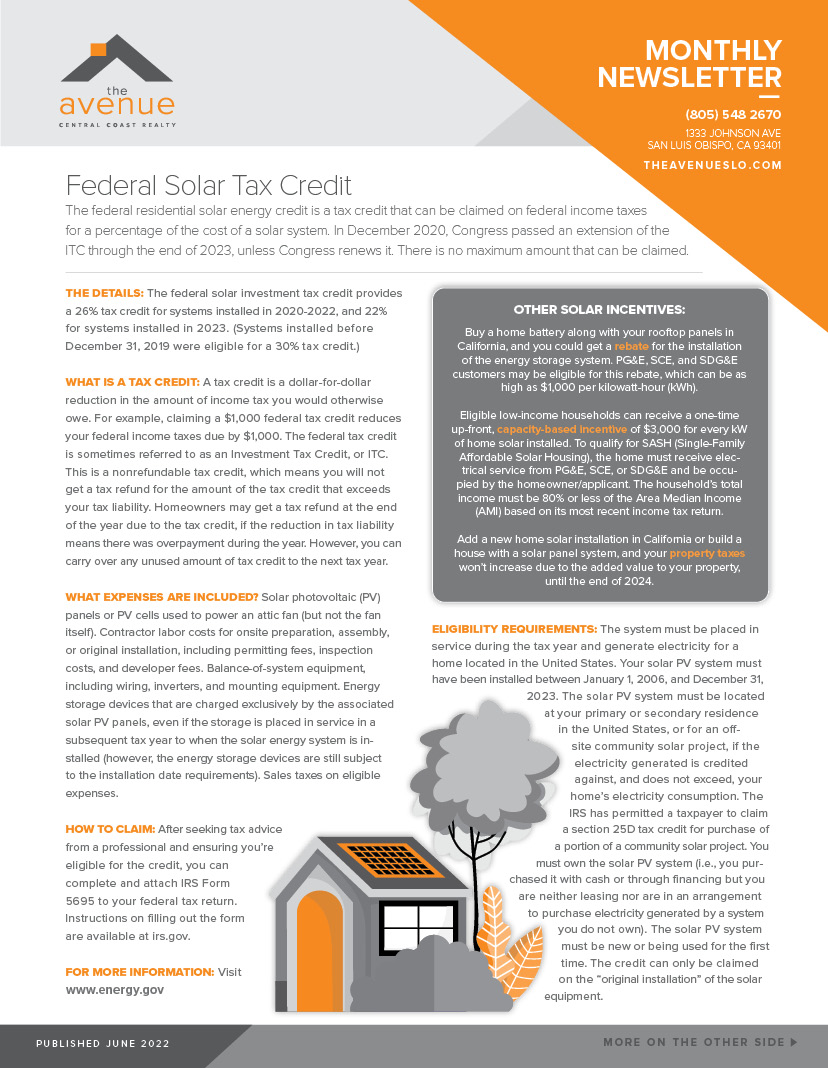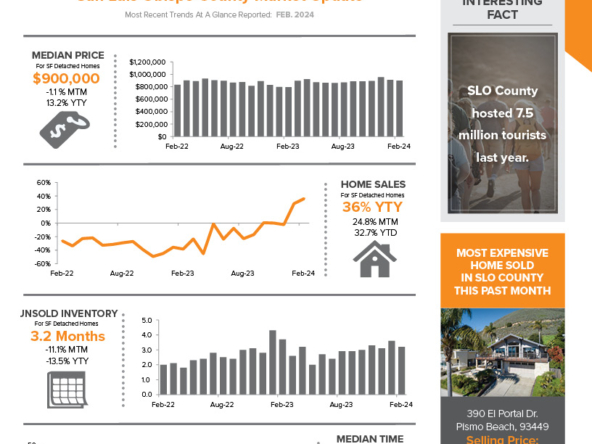SLO County Market Update / Federal Solar Tax Credit…
The federal residential solar energy credit is a tax credit that can be claimed on federal income taxes for a percentage of the cost of a solar system. In December 2020, Congress passed an extension of the ITC through the end of 2023, unless Congress renews it. There is no maximum amount that can be claimed.
The Details: The federal solar investment tax credit provides a 26% tax credit for systems installed in 2020-2022, and 22% for systems installed in 2023. (Systems installed before December 31, 2019 were eligible for a 30% tax credit.)
What is a Tax Credit: A tax credit is a dollar-for-dollar
reduction in the amount of income tax you would otherwise owe. For example, claiming a $1,000 federal tax credit reduces your federal income taxes due by $1,000. The federal tax credit is sometimes referred to as an Investment Tax Credit, or ITC. This is a nonrefundable tax credit, which means you will not get a tax refund for the amount of the tax credit that exceeds your tax liability. Homeowners may get a tax refund at the end of the year due to the tax credit, if the reduction in tax liability means there was overpayment during the year. However, you can carry over any unused amount of tax credit to the next tax year.
What expenses are included? Solar photovoltaic (PV) panels or PV cells used to power an attic fan (but not the fan itself). Contractor labor costs for onsite preparation, assembly, or original installation, including permitting fees, inspection costs, and developer fees. Balance-of-system equipment, including wiring, inverters, and mounting equipment. Energy storage devices that are charged exclusively by the associated solar PV panels, even if the storage is placed in service in a subsequent tax year to when the solar energy system is installed (however, the energy storage devices are still subject to the installation date requirements). Sales taxes on eligible expenses.
How to Claim: After seeking tax advice from a professional and ensuring you’re eligible for the credit, you can complete and attach IRS Form 5695 to your federal tax return. Instructions on filling out the form are available at irs.gov.
For more information: Visit www.energy.gov
Eligibility Requirements: The system must be placed in service during the tax year and generate electricity for a home located in the United States. Your solar PV system must have been installed between January 1, 2006, and December 31, 2023. The solar PV system must be located at your primary or secondary residence in the United States, or for an off-site community solar project, if the electricity generated is credited against, and does not exceed, your home’s electricity consumption. The IRS has permitted a taxpayer to claim a section 25D tax credit for purchase of a portion of a community solar project. You must own the solar PV system (i.e., you purchased it with cash or through financing but you are neither leasing nor are in an arrangement to purchase electricity generated by a system you do not own). The solar PV system must be new or being used for the first time. The credit can only be claimed on the “original installation” of the solar equipment.
Other Solar Incentives:
Buy a home battery along with your rooftop panels in California, and you could get a rebate for the installation of the energy storage system. PG&E, SCE, and SDG&E customers may be eligible for this rebate, which can be as high as $1,000 per kilowatt-hour (kWh).
Eligible low-income households can receive a one-time up-front, capacity-based incentive of $3,000 for every kW of home solar installed. To qualify for SASH (Single-Family Affordable Solar Housing), the home must receive electrical service from PG&E, SCE, or SDG&E and be occupied by the homeowner/applicant. The household’s total income must be 80% or less of the Area Median Income (AMI) based on its most recent income tax return.
Add a new home solar installation in California or build a house with a solar panel system, and your property taxes won’t increase due to the added value to your property, until the end of 2024.
Interesting Fact
California holds 6 of the nation’s top 10 most expensive zip codes from 2021. It was the first year that New York City zip codes did not make the top 20.




